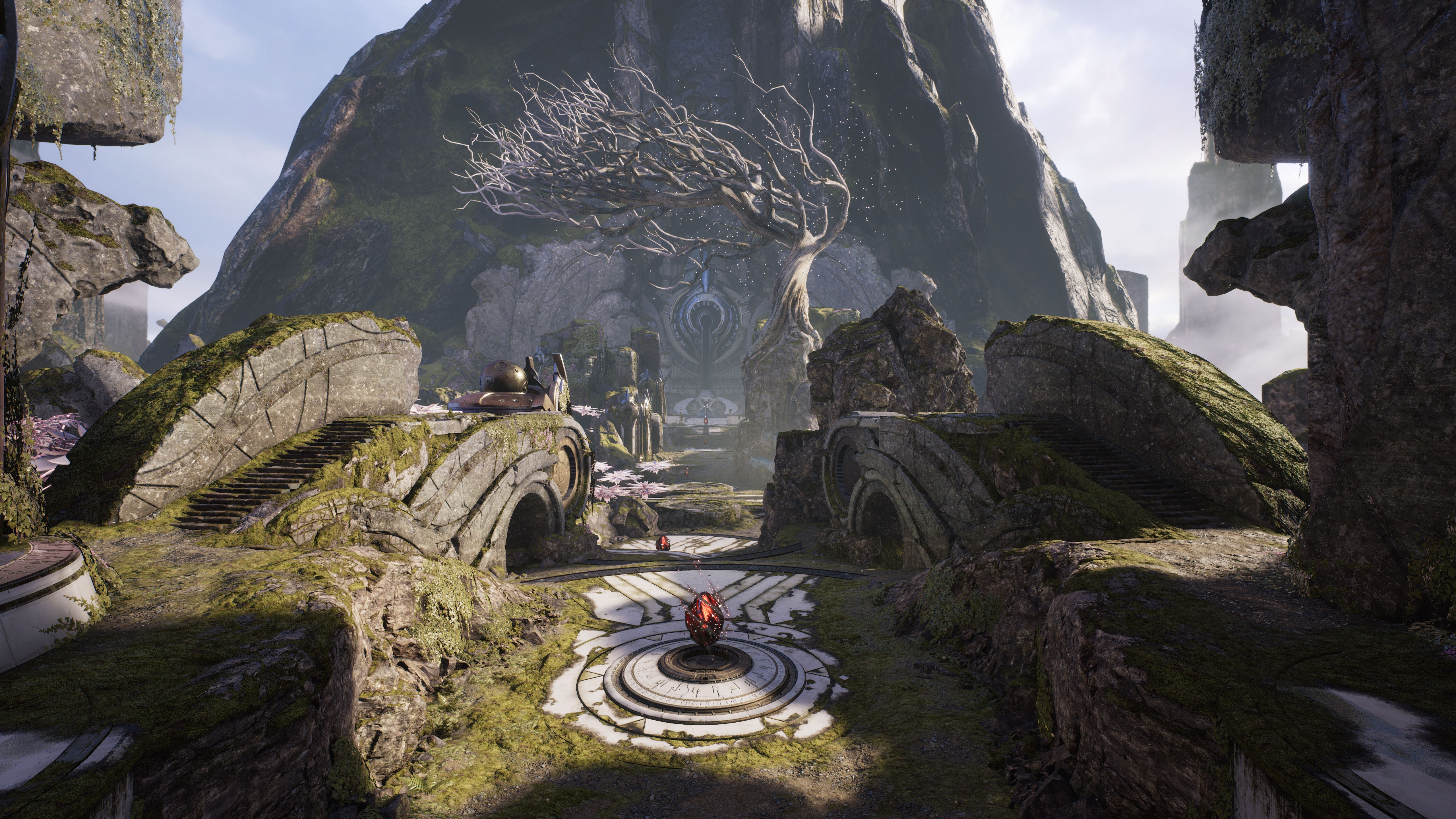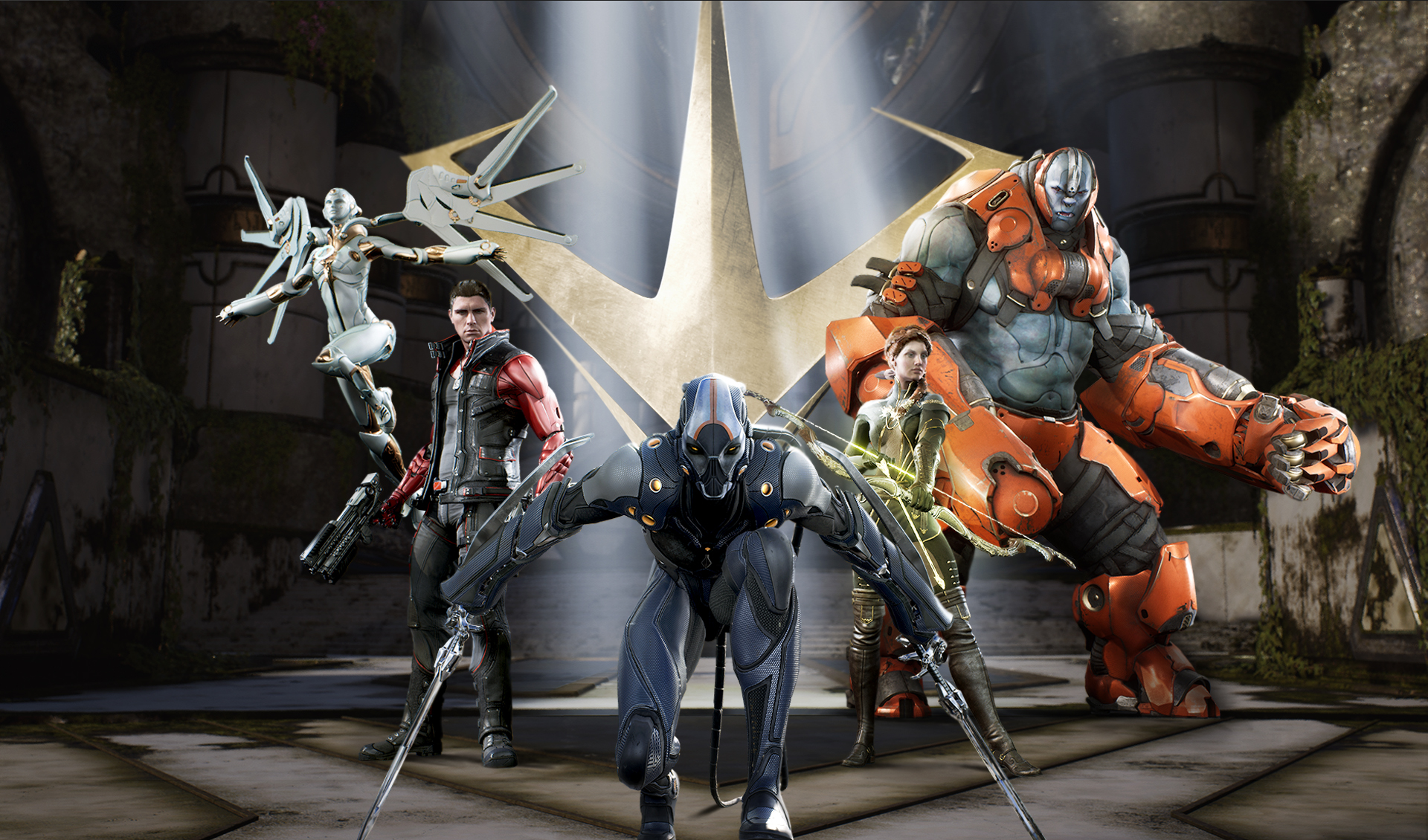Epic Games has been known for action games such as Unreal Tournament and Gears of War. So when they decided to jump into the MOBA genre with their upcoming title Paragon, it was a whole new challenge. Paragon brings a breath of fresh air into the MOBA universe with some unique aspects, such as real elevation on the map that lets you decide if you will gank from the side or perhaps from above your enemy.
I was able to sit down with Steve Superville, the creative director of Paragon, and get some questions answered about the game.
Ben Hernandez: Coming from mostly action games, how was Paragon a different challenge? In the sense that as a MOBA are you designing things with ideas of how to grow them down the road?
Steve Superville: The most challenging part was identifying the key aspect of MOBAs and using them as constraints for the design of characters and abilities. Those are often at odds with what our “pure action” instincts were. For example, in traditional action games, combat is frantic and lethality is high, both of which equate to individualized fun. However, in MOBAs, it’s all about cooperative fun through plays and collaboration; we had to incorporate more time and space into our abilities so that players have a chance to see and understand what is happening and then respond to each other. This allows players to express mastery together and create those magical moments of synergy that happen.
BH: Now that we are seeing the game played more in the public eye, how does that effect what changes are coming? I have read that after a game is launched developers really get an idea of how the game will be updated because the gamers are better players than the team most of the time.
SS: That’s exactly right! Even in our early Online Tests, players were giving incredibly valuable feedback that quickly began shaping how we approached changes. Just having that many players banging around in a game is invaluable, because like you said, the players are always going to be better than the designers on the whole. It’s been eye-opening and exciting for us to be able to react to feedback and iterate this quickly.
BH: Paragon has a unique card system which seems to be trying to pull away from traditional cookie cutter builds in MOBAs. What was the thought process on how the card system will be used to provide a unique strategic opportunity for the players?
SS:A large part of strategy comes from the committed choices players make going into a match. Part of the way MOBAs innovated in the competitive PvP space is to have a draft mode and team composition be an integral part in how players approach the match. The card system is designed to take that a step further by populating the item store with choices the player makes before the match begins. Players build their deck of cards which they have access to during a match. This means players will have strengths, weaknesses, and synergies defined by the decks the build and players get into a battle of wills. Each team trying to force the other into situations where they are strong and the opponent is weak.
BH: There are a lot of questions about whether Paragon will become an eSport. How much of that thought is put into the design of the game?
SS: Paragon was designed from the start to be a competitive experience, with deep strategic choice for players. We’re focused on making sure we’re meeting that goal; it’ll be up to the players to decide whether Paragon ever becomes an eSport.
BH: Paragon has chosen to go with a third person point of view over the top down that’s used in some other traditional MOBAs. Can you talk about how this changes the experience of the matches, especially with the lanes being tiered in Paragon and players being able to look across and see what is going on in other lanes?
SS: Immediately, the change in perspective puts you right into the fight, as opposed to looking down on it. The hope was to make it feel like you really are the Hero, versus being a puppet master and issuing orders. That feeling of being connected to the action is real and it’s important. The verticality that you mentioned is also important with that third-person perspective, even beyond the tiered lanes, because it really changes how you approach the battle.
BH: In other MOBAs, you have multiple arenas that the player can choose from, whether they are 5v5 or 3v3 in different map setups. Does Paragon have any plans for different maps and game modes in the future?
SS: Paragon is early, and right now we’re focusing on tuning Heroes and this one map for the best experience.
BH: Can you talk a little bit about Paragon‘s replay system and GIF creator? Gamers love to show off an epic kill, skill shot, or a near-death moment. It seems this really caters to that side of the community in allowing them some of those bragging rights.
SS: What we call “MOBA moments” — the ganks, the team fights, the chases through the jungle — they’re really important to players, and they become stories that you tell. Giving people the ability to look back on those moments and then share them was important early on.
Another thing to consider is that the best way to get good at the game and to learn Heroes is to watch the best players, so the replay system is also a learning tool. You can see the action from different angles, understand why players made certain choices, how they use their abilities. With the replay system, you play a match against a particularly skillful opponent and then go back in to see what they did that made them so challenging to play.
We’re already also seeing a lot of great community content, like you’ve mentioned, people making their own cinematic style videos and highlight clips. As we expand the replay system and the game, we can’t wait to see what else comes out of it.
BH: Many gamers love to know the lore of the games they are playing. Has there been any discussion of giving the character’s backstories?
SS: This is something that comes up a lot; right now we’re focusing on the gameplay, but will have more to share as the game grows.
BH: Going back a bit to the card system. In other MOBAs, a big aspect is team synergy and certain characters’ abilities working well with others to create some lethal combinations. Do you feel Paragon does this with the characters, or will it lean more on cards interacting to create these systematic interactions between players?
SS: It’s designed to see a bit of both. The Hero skills are definitely designed to compliment one another as a team, and players will be able to build decks that do the same thing.
BH: Can you give us a glimpse of what to expect from Paragon between now and the official release? Anything game changing possibly in the works?
SS: We’ve already introduced a new Hero, Sevarog, into the mix, with a new Hero coming every three weeks. We’ll also continue to balance, fix bugs, and add content to the game in the coming months… we’re still early! There’s a lot more to come.
With so many MOBAs out there, Paragon is looking to separate itself from the pack with unique play. Early access has begun and is available for purchase at Paragon‘s website. Let me know what you think of the game in the comments below.










Published: Mar 30, 2016 11:23 am